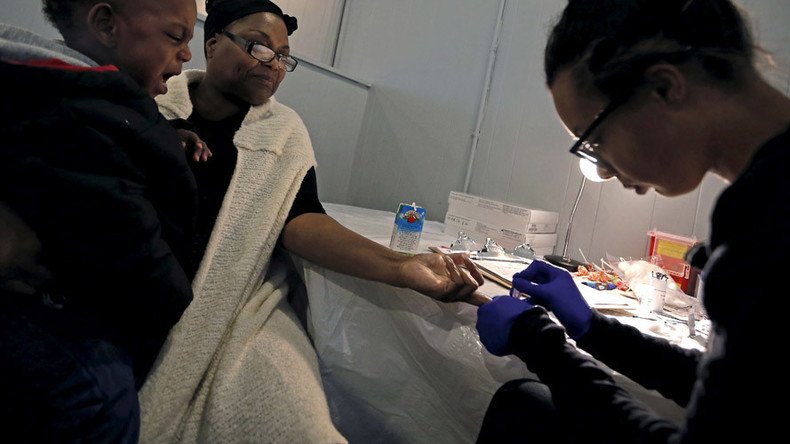14% of US children have dangerously high levels of lead in their blood– report

Amidst the fallout from the Flint water crisis, concern for lead poisoning is rising – as is the number of cities where it has been found to be a problem. A new study finds as many as one in seven children in some zip codes have unsafe blood lead levels.
A study published on Wednesday in the Journal of Pediatrics found that three percent of children in the US have blood lead levels of over five micrograms per deciliter.
Lead levels 23 times higher than federal limit found in Chicago school for disabledhttps://t.co/OetYGGU1oopic.twitter.com/h9KKfsJIBk
— RT America (@RT_America) June 14, 2016
While the Centers for Disease Control and Prevention (CDC) considers anything above that level a cause for concern, Harvey Kaufman, senior medical director at Quest Diagnostics and a co-author of the study, reiterated to The Washington Post that the CDC’s position is that “With blood [lead] levels in kids, there is no safe level.”
Three percent is not great, but it is even worse in certain areas such as Minnesota, where 10.3 percent of young children have elevated levels of lead in their blood. In second place is Pennsylvania with 7.8 percent, followed by Kentucky’s 7.1 percent, Ohio’s 7 percent, and Connecticut with 6.7 percent.
But why are so many children in the US suffering from a seemingly preventable problem? It can be partly explained by the fact that, for a long time, soil and lead-based paint were seen as the main sources of lead poisoning. However, while both of those are substantial threats, too much focus may have been placed on them while other hazards went ignored.
For example, in 2000, the CDC released “Eliminating Childhood Lead Poisoning: A Federal Strategy Targeting Lead Paint Hazards,” a plan that focused mostly on pre-1960 housing units with a very high chance of containing lead paint, while recommending expanded blood lead screenings.
The plan does mention other sources of lead poisoning, however, such as “industrial emissions, drinking water, consumer goods, hazardous waste sites, and other sources.” But again, the plan was almost entirely devoted to removing lead paint hazards. It also intended to eliminate elevated blood lead levels by 2010.
That 16-year-old scheme did note something that Wednesday’s study also found. The 2000 plan says, “16% of low-income children living in older housing are poisoned, compared to 4.4% of all children.”
Toxic lead water found at 3 state-run centers for disabled in Texas https://t.co/mit4h9MKOBpic.twitter.com/cT36E0wfXG
— RT America (@RT_America) May 18, 2016











